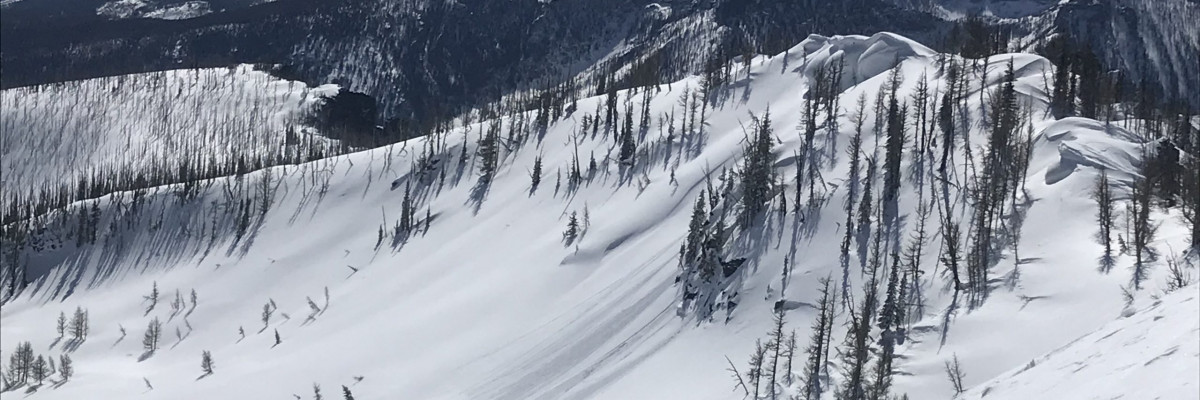The avalanche danger in the west-central Montana backcountry is Moderate this morning and considerable this afternoon.
Good Morning. This is Jeff Carty with the West Central Montana Avalanche Center advisory on Thursday, April 1, 2021. This advisory does not apply to operating ski areas and expires at midnight tonight. The USDA Forest Service is solely responsible for its content.
Weather and Snowpack
Mountain temperatures this morning ranged from 28º to 32º and were climbing by 5:00 am. They are expected to reach 57º above 6000’ today. Skies will be clear and the sun will be out rapidly warming southern aspects. Winds will be moderate out of the southwest.
In the past 48hrs the weather has done a complete 180º. From mid winter weather and touchy avalanche conditions to spring high pressure and wet snow problems.
The warmth that began yesterday will continue through at least Saturday with progressively warmer temperatures. A mild freeze last night above 5000’’ has frozen snow surfaces and they will warm rapidly today. Freezing levels may rise to 9000’ and could affect north aspects as well.
With the warming we are at risk for wet slab avalanches. The new snow sits on a couple of very stout crusts that will provide both a barrier to free water moving through the snow pack and a very slick bed surface if lubricated by water. The new snow is up to 24” thick and could form large destructive wet slabs.
In addition, in many areas the snowpack is only frozen 18 to 25 inches deep. Below this the snowpack remains moist and packable. This snowpack will warm quickly and poses the problem of isothermal snow and much larger wet slides as the whole snowpack loses cohesion.
Pay close attention to the temperature and solar warming over the next few days. As the snowpack warms up, roller balls will start to fall off steeper rocks followed by warming of the snow surface and finally, the crusts will break down. If you are punching into wet snow more than a few inches deep it’s time to move to shadier aspects or home. If you are punching through moist crusts exercise extreme caution and avoid all avalanche terrain. If the snow surface does not freeze overnight then the risk of wet slides increases.
North aspects remained cold and dry yesterday. That may change with rising freezing levels today. Yesterday we found much better bonding of the new snow, but were still able to get propagation at the new snow/old snow interface on facets and around two crusts in the upper part of the snowpack. These should be investigated before committing to north facing terrain greater than 35º. Any propagation on facets is cause for concern.
Timing is everything with spring conditions. Stability will be higher in the morning and decrease throughout the day. Late afternoon is when the greatest wet slide hazard exists. Caught at the right time, when just the top couple inches of the snowpack is warmed, corn skiing will be good. This will be a very short window today.
The Bottom Line
Rapidly rising temperatures combined with sun warming make wet slab avalanches likely today. Move to shadier aspects as roller balls start and you sink past mid boot in wet snow. Plan your exit from the backcountry so you are not crossing southerly or westerly avalanche terrain late in the day. On north slopes, faceted layers have potential to propagate. Avoiding north slopes over 35º is the easiest management. Stay alert for red flags. Carry a beacon, shovel, and probe.
Upcoming Education Events
Please visit our education page for an up-to-date list of regional events and course offerings. Below are new educational opportunities to check out this week.
- April 1, 6-8 PM MST | Mountain Mind | FREE Virtual Event | Get more details and register HERE
Public Observations
Thank you to everyone who has taken the time to send in a public observation. Please keep sharing what you find and see while out in the backcountry. You can now text us your observations to (406) 219-5566 when you don’t have time to fill out the observations page.
Ski and ride safe.
























